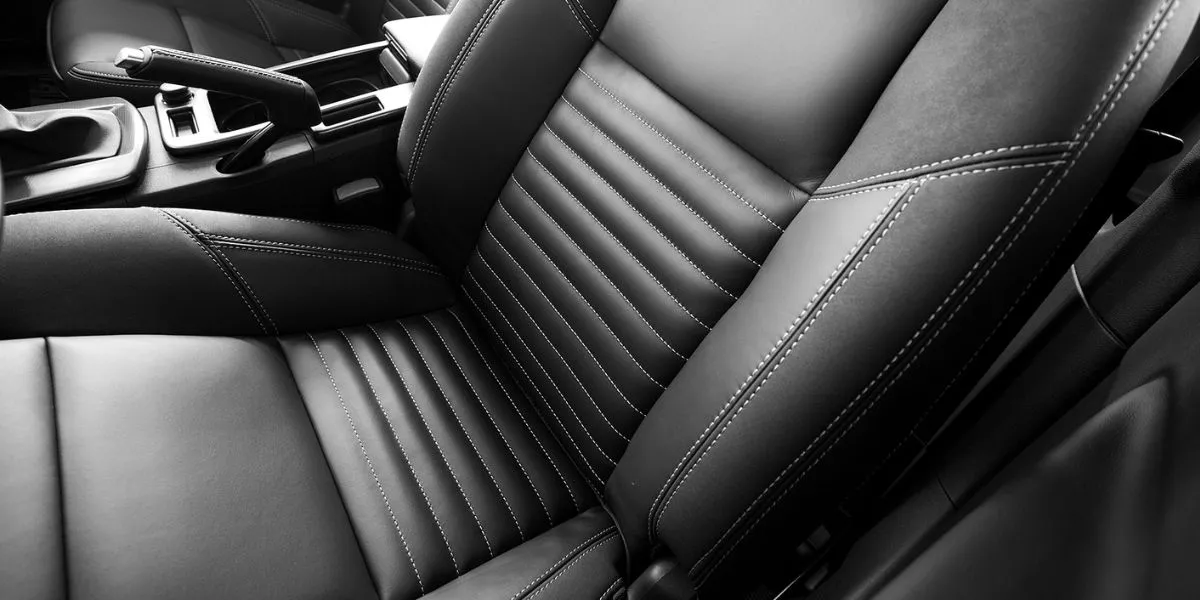
To properly maintain leather car seats, you need to follow a few key steps that can make a significant difference in preserving their quality and appearance over time. From regular cleaning routines to selecting the right products and techniques for conditioning, each aspect plays a crucial role in extending the lifespan of your leather seats. However, there is one often-overlooked factor that can have a lasting impact on your seats' condition. Can you guess what it is?
Importance of Regular Cleaning
Regularly cleaning your leather car seats not only maintains their appearance but also helps extend their lifespan. Dust, dirt, and spills can accumulate over time, causing wear and tear on the leather if not promptly addressed. By incorporating a routine cleaning schedule, you prevent these contaminants from settling in and causing damage. A simple wipe down with a damp cloth or a gentle leather cleaner can make a world of difference in preserving the quality of your seats.
Moreover, regular cleaning also contributes to a healthier environment inside your car. Dust and dirt can harbor allergens and bacteria, impacting the air quality within your vehicle. By keeping your leather seats clean, you create a more hygienic space for you and your passengers.
In essence, the importance of regular cleaning can't be overstated when it comes to maintaining your leather car seats. Not only does it enhance the aesthetic appeal of your vehicle, but it also plays a crucial role in ensuring the longevity and cleanliness of your leather seats.
Choosing the Right Cleaning Products
To effectively maintain your leather car seats, selecting the appropriate cleaning products is essential for preserving their quality and appearance. When choosing cleaning products for your leather seats, opt for pH-balanced solutions specifically designed for leather upholstery. Avoid using harsh chemicals or household cleaners that can damage the leather's finish and texture. Look for leather cleaners that contain natural ingredients like aloe vera or coconut oil to help nourish the leather and maintain its supple feel.
It's crucial to read the product labels and make sure they're suitable for your type of leather, whether it's smooth or textured. For perforated leather seats, choose a cleaner that's safe for such designs to prevent clogging the perforations. Additionally, consider investing in a leather conditioner to use after cleaning, as it helps moisturize the leather and prevent it from drying out and cracking. By selecting the right cleaning products tailored to your leather seats, you can ensure they remain in top condition for years to come.
Proper Conditioning Techniques
Using a microfiber cloth, gently apply the leather conditioner in circular motions to ensure thorough coverage and absorption into the leather pores. This technique helps the conditioner penetrate deeply, keeping the leather supple and preventing it from drying out and cracking. Make sure to follow the product instructions regarding application frequency to maintain the leather's optimal condition.
When conditioning your leather car seats, focus on one section at a time to ensure even coverage. Work the conditioner into the leather in a gentle manner, allowing it to seep into the material for maximum effectiveness. Pay special attention to areas that may be more prone to wear and tear, such as the driver's seat and armrests.
Regular conditioning not only keeps your leather car seats looking great but also extends their lifespan. By nourishing the leather with a conditioner, you're protecting it from damage caused by UV rays, spills, and general wear. Remember to condition your seats periodically to maintain their luxurious look and feel.
Preventing Sun Damage
To shield your leather car seats from sun damage, consider investing in UV-protective seat covers or parking in shaded areas whenever possible. UV rays can cause leather to fade, dry out, and crack over time. By using protective covers, you create a barrier that helps prevent direct exposure to harmful sunlight. When parking, opt for shaded spots or use a windshield sunshade to reduce the amount of UV light entering your vehicle.
Additionally, regular cleaning and conditioning can help maintain the leather's moisture and prevent it from becoming brittle due to sun exposure. Choose a leather conditioner with UV protection to further shield your seats from potential damage. When not in use, consider covering your car with a car cover to provide overall protection from the sun's rays.
Tips for Stain Removal
Consider utilizing a specialized leather cleaner to effectively target and remove stains from your leather car seats. Before applying any cleaner, it's crucial to test it on a small, inconspicuous area to ensure it doesn't cause damage. Once confirmed safe, apply the cleaner onto a microfiber cloth and gently dab the stained area. Avoid rubbing vigorously, as this could worsen the stain or damage the leather. For tougher stains like ink or grease, you can use a specialized leather stain remover following the manufacturer's instructions carefully.
In case of liquid spills, quickly blot the area with a clean cloth to absorb most of the liquid. Avoid using excessive water or harsh chemicals, as they can harm the leather. If the stain persists, you may need to consult a professional detailer for assistance. Remember, prompt action is key to preventing the stain from setting into the leather permanently. Regularly conditioning your leather seats can also help repel stains and keep them looking pristine.




